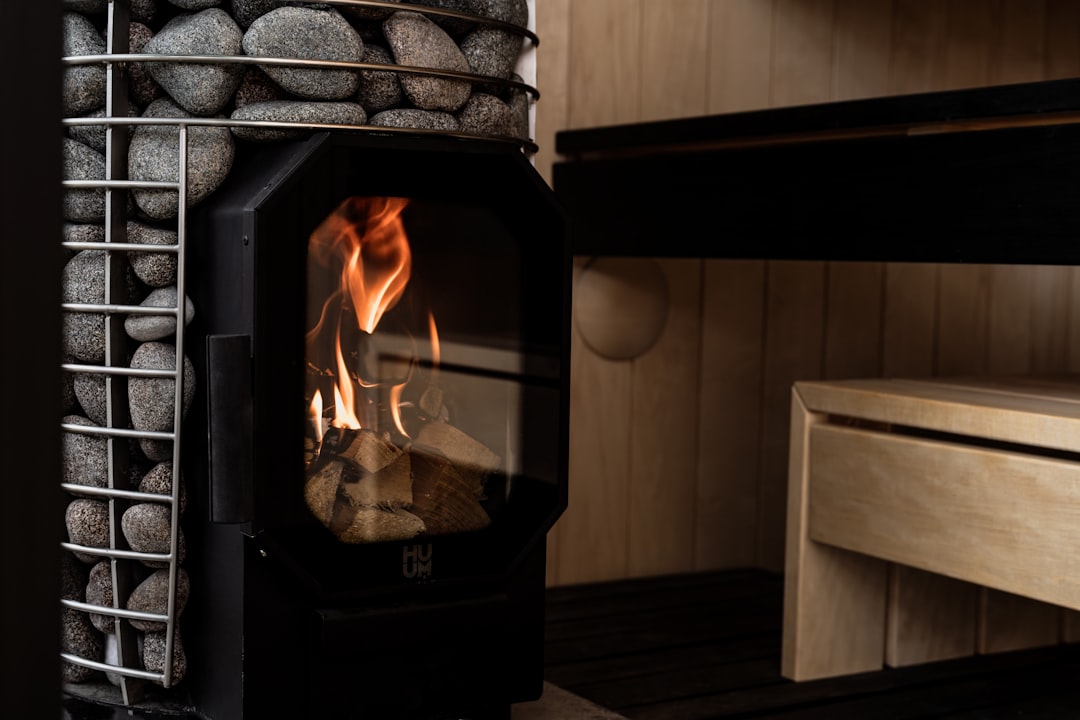

Engage prospects with a scan and streamline customer engagement with FREE QR code marketing tools by Sona – no strings attached!
Create a Free QR CodeFree consultation

No commitment

Engage prospects with a scan and streamline customer engagement with FREE QR code marketing tools by Sona – no strings attached!
Create a Free QR CodeFree consultation

No commitment
In today’s digitally driven world, QR codes have evolved from a novelty to a strategic powerhouse in bridging offline engagement with online action. For fireplace insert installation services, QR codes create a seamless connection between technicians, homeowners, and service teams. A single scan can surface model-specific instructions, permit guidance, or a maintenance request form without requiring an app or a long search. This is especially relevant in an environment where many high-value moments occur in the field and where prospects frequently research options silently before contacting a provider. For a broader view of applications, see qr codes in marketing.
When printed manuals, paper checklists, and static safety forms are the norm, teams struggle with outdated details, missing documentation, and untrackable interactions. The result is inefficiency, elevated support load, and inconsistent customer experiences. QR codes offer a simple, universal action point that ensures technicians and customers always have the latest information in hand. They make it possible to serve instant video walkthroughs, clarify gas vs. wood insert considerations, or collect feedback from a thank-you card scan with Google reviews, all while capturing data that was previously invisible.
Adopting a modern QR workflow gives businesses real-time visibility into engagement signals across the install journey. This translates into faster installs, fewer mistakes, better follow-up, and more predictable growth. Used strategically, QR codes can transform the way fireplace insert providers capture leads, educate homeowners, and support technicians on every job site.

QR codes bridge the gap between busy field technicians, homeowners, and service coordinators by connecting physical equipment and paperwork to dynamic, digital resources. Deployed well, they replace scattered documentation and untrackable conversations with a cohesive system that informs every stakeholder and captures real-time engagement data.
One persistent challenge in this space is the loss of critical information or delays caused by outdated documentation and missed opportunities to identify high-value prospects during the service process. Installers often arrive to find an unfamiliar insert variant or a unique venting scenario while critical documents are sitting back at the shop. At the same time, customers ask nuanced questions about cost, efficiency ratings, or permit timelines that go untracked. QR codes solve both issues by routing each scan to the right content and by logging every interaction.
Here’s how to roll out QR code-driven transformation:
Analog processes like paper forms, printed troubleshooting binders, and manual sign-up sheets slow teams down and introduce errors. QR-enabled forms, dynamic video hubs, and auto-routed CRM entries streamline tasks, improve accuracy, and deliver measurable lift in technician productivity and customer satisfaction. Platforms like Sona QR support every step: generating dynamic codes, updating content post-print, and unifying analytics for smarter decisions.

Fireplace insert installation blends on-site craftsmanship with information-heavy decision making. Customers compare fuel types and aesthetics, navigate building codes, and weigh long-term ownership costs. Meanwhile, technicians juggle manufacturer updates, evolving safety standards, and fast-changing scheduling demands. Traditional print materials cannot keep up with this pace, and most are not trackable.
QR codes remove these barriers by connecting the moment of need to the right digital action. With a scan, a homeowner can watch a 45-second video on proper CO detector placement, or a tech can pull up a venting chart for a specific model. For businesses, the same scan feeds analytics that clarify what topics and products generate the most interest, and where resources are underused or outdated.
QR codes address core challenges in this industry:
In a trade that relies heavily on physical environments, QR codes inject agility and data into everyday moments. From install day to annual service reminders, they support better decisions, make customers feel cared for, and offer managers a new layer of visibility into performance.

Not all QR codes serve the same purpose. Fireplace insert teams benefit from a mix of formats tailored to the workflows of technicians, sales staff, and homeowners. By aligning the format with the desired outcome, you encourage action and reduce friction across every touchpoint.
The following formats are particularly effective in fireplace insert installation services:
With a platform like Sona QR, you can provision and manage all of these formats in one place. You can also style each code, add campaign metadata, and edit destinations later without replacing printed assets, which is especially useful for long-life materials like installation stickers or showroom displays.

Growth hinges on placing QR codes where they intercept real-world interest and action. Fireplace insert buyers and owners interact with your brand in showrooms, on job sites, through mail, and during maintenance visits. Identify the surfaces, documents, and moments that already exist in your process, then turn them into scannable entry points.
Common high-yield placements include:
By systematizing QR placements and aligning them with clear calls to action, you ensure every in-person interaction has a digital next step. Over time, the resulting data highlights which products, messages, and placements produce the highest-quality leads and the most satisfied customers.

QR codes shine when they are specific to context and outcome. For fireplace insert providers, that means delivering the right content to support safe installs, efficient service, and confident ownership, while making each interaction measurable.
Each of these use cases turns an offline moment into a digital action. They reduce friction, standardize experiences, and create a stream of intent data you can use to improve marketing, operations, and training.
Every QR scan is a signal. It reveals intent, context, and timing that your CRM rarely captures from paper brochures or untracked conversations. By deploying multiple QR codes across the customer journey, you can segment audiences automatically and serve relevant follow-ups that convert. For broader QR adoption in trades, see QR uses in building services.
Start by mapping different QR codes to journey stages and use cases:
In this industry, useful audience distinctions include new install customers versus maintenance clients, gas versus wood insert researchers, do-it-for-me versus DIY-leaning homeowners, and trade show prospects versus local showroom visitors. With Sona QR, each code becomes a smart entry point that generates behavior-based segments you can convert with tailored messaging. For deeper segmentation strategy, read Sona’s blog post The Essential Guide to Intent Data. To connect scan data with CRM execution, see Sona’s guide on HubSpot integration.
QR codes act as connective tissue across channels. They transform traditional assets into interactive experiences while enabling attribution that was previously unavailable. For fireplace insert installers, a scan can guide a showroom visitor to a personalized quote, a mail recipient to a maintenance scheduler, or a service customer to a review form.
Consider these integrations:
Building a connected offline-to-online funnel improves both customer satisfaction and revenue efficiency. With a platform like Sona QR, you can manage codes from a central dashboard, monitor performance by channel, and sync data with your CRM to keep campaigns unified and accountable.
Execution fails when goals are fuzzy, content is generic, or teams treat QR codes as an afterthought. Success comes from aligning QR campaigns to specific friction points and designing every element for a clear action and measurable result.
Clarify the business problem you are solving. You might aim to reduce support calls, simplify installations for more complex insert models, increase seasonal maintenance bookings, or improve post-install reviews. Selecting a focused use case tightens the creative, the destination experience, and the internal handoffs required for success.
For fireplace insert providers, strong first campaigns often include install sticker QR codes that open a model-specific safety checklist, seasonal direct mailers with book-now QR links, or showroom signage that connects shoppers to an instant quote form. Each use case should tie to a single KPI such as booking rate, registration completion, or review volume so that optimization is straightforward.
Choose between static and dynamic codes based on the need for flexibility and analytics. Static codes work for fixed destinations like a general safety overview or a universal maintenance PDF. Dynamic codes are ideal for anything that may change or that benefits from tracking, such as rotating promotions, updated installation videos, or region-specific compliance resources.
When in doubt, default to dynamic. It lets you adjust the destination post-print, add UTM parameters, and analyze scans by time, location, and device. A platform like Sona QR also makes it easy to use one code across multiple campaigns by switching the link target while preserving performance history.
Design matters because scanning is a visual behavior. Frame the QR code clearly, ensure adequate white space, and include your logo or color treatments to signal brand trust. Pair the code with a concise, benefit-driven call to action like Scan for model 620 safety checklist or Scan to schedule your cleaning in 30 seconds.
Test codes in the environments where they will live. For stickers placed near the hearth, confirm readability under dim lighting and from typical viewing distances. For mailers, confirm scannability through glossy coatings and in different lighting conditions. Test across iOS and Android devices, from multiple angles, and at various sizes to remove friction before launching.
Start with placements that map to your growth goals. If you want more maintenance bookings, prioritize direct mail, invoices, and service leave-behinds. If showroom traffic is strong but conversion is weak, deploy QR codes on display cards, demo stations, and posters that route to quotes or cost calculators. For installer efficiency, use internal QR codes in job packets and toolkits that connect techs to SOPs and troubleshooting videos.
Make sure each placement matches the scanning context. Codes used near hot surfaces or reflective glass may need larger sizes and matte finishes. Outdoor signage requires higher contrast and durable materials. Trade show assets benefit from oversized codes visible from a few feet away, with bold CTAs that make the action obvious in a busy environment.
Tracking is where QR codes move from novelty to strategy. Use a solution like Sona QR to capture scan time, device type, and coarse location, then tie that data to conversion outcomes on the destination page. Add UTM parameters to distinguish channels and placements, and use custom link parameters to tag model numbers or installer IDs.
Review performance weekly in the early stages. Look for conversion drop-offs and friction points. A/B test CTAs, landing page headlines, and placement locations. If direct mail scans spike on weekends, schedule follow-up texts or emails on Saturday afternoons. If certain models drive more troubleshooting scans, update training and content for those units. Optimization keeps your codes relevant and your outcomes improving over time.
Basic scan counts are not enough. To prove impact and refine strategy, you need to connect scan behavior to outcomes like booked installs, completed registrations, scheduled cleanings, or accessory purchases. Full-funnel visibility lets you double down on what works and stop what does not.
Advanced tracking platforms enable robust measurement and closed-loop insights:
With Sona QR and Sona.com, you can centralize these insights. Sona is an AI-powered marketing platform that turns first-party data into revenue through automated attribution, data activation, and workflow orchestration. Sona QR captures the real-world engagement at the scan level. Sona.com links that engagement to identity and revenue using multi-touch attribution and buyer journey analytics, allowing you to demonstrate how QR activity contributes to pipeline and closed-won deals.
The strongest QR programs are simple to use, easy to measure, and tightly integrated with existing systems. Focus on clarity, context, and continuity to keep scanning behavior high and conversion rates healthy.
Creative deployments work well in this vertical. Consider a branded magnet with a QR code that opens a pre-filled maintenance request, or a QR on an accessory tag that loads a short video on glass cleaning. You can generate and track your first codes for free with Sona QR and have a working proof of concept in minutes.
For fireplace insert installation businesses, QR codes transform every touchpoint into a digital onramp. From an install sticker to a showroom placard, a single scan can guide a homeowner to the right action and give your team the data needed to support, retarget, and improve. This closes persistent gaps created by paper-based processes and scattered communications.
The payoff is both strategic and immediate. You deliver faster installs with fewer errors, create a consistent customer experience from showroom to service, and gain analytics that connect marketing and operations to real revenue outcomes. Over time, QR insights sharpen decisions about staffing, promotions, and product focus.
With Sona QR, you have the tooling to capture demand at the source, attribute it to revenue, and scale what works. Start with a single use case like install stickers or maintenance mailers, measure results, then expand placements and automations to build a durable, data-driven growth engine. Start creating QR codes for free: Start creating QR codes for free.
QR codes have revolutionized fireplace insert installation services by turning routine technician support into seamless, data-driven interactions. From accelerating customer acquisition to enhancing technician efficiency and delivering superior post-installation support, QR codes replace cumbersome manuals and guesswork with instant access to vital information and real-time engagement insights. Imagine technicians scanning a code onsite to instantly access installation guides, troubleshooting tips, or customer history—streamlining service and boosting satisfaction.
With Sona QR, you can create dynamic, trackable QR codes in seconds that update instantly without reprinting, ensuring your technicians and customers always have the latest information. Each scan connects directly to actionable data, empowering you to optimize workflows, improve training, and demonstrate ROI with precision. Start for free with Sona QR today and transform every scan into a smarter, faster, and more profitable installation experience.
The steps include digitizing install guides and checklists with QR codes, equipping customer-facing assets with codes for registration and maintenance, centralizing monitoring through a dashboard, and tracking usage to optimize installation efficiency and customer engagement.
Use QR codes placed on showroom displays or brochures to access model comparison tools, fuel type considerations, cost calculators, and efficiency ratings that help homeowners make informed decisions.
QR codes on showroom signage, direct mailers, and service leave-behinds can direct you to scheduling pages or contact details of local professional installers and service coordinators.
While the article focuses on QR code integration, it highlights that fireplace inserts come with model-specific safety, cleaning, and maintenance guidance accessible via QR codes, improving safety and ease of ownership compared to traditional fireplaces.
Common issues include outdated documentation and unfamiliar insert variants on-site; QR codes provide instant access to updated model-specific guides, venting charts, and troubleshooting videos that reduce errors and delays.
Use Sona QR's trackable codes to improve customer acquisition and engagement today.
Create Your FREE Trackable QR Code in SecondsJoin results-focused teams combining Sona Platform automation with advanced Google Ads strategies to scale lead generation

Connect your existing CRM

Free Account Enrichment

No setup fees
No commitment required

Free consultation

Get a custom Google Ads roadmap for your business






Launch campaigns that generate qualified leads in 30 days or less.
